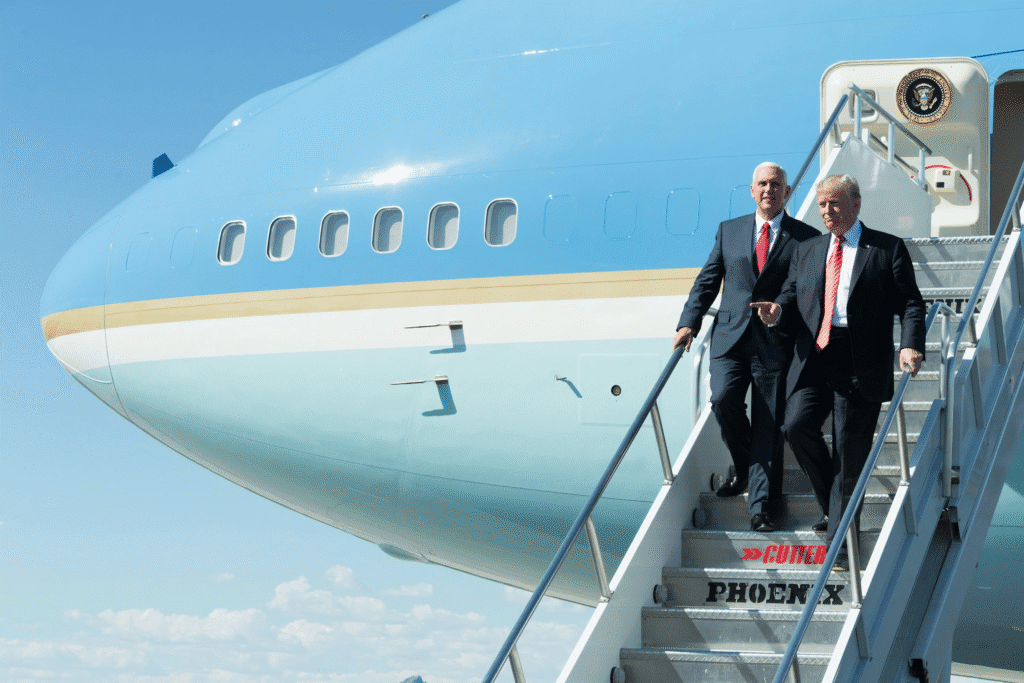“Grocery prices are down, mortgage rates are down, and inflation has been defeated.” These were the confident words of President Donald Trump at the United Nations General Assembly last month. He proudly claimed that the long battle with inflation was finally over. However, for many Americans, that victory doesn’t quite feel real yet. The cost of living remains high, and daily essentials continue to pinch household budgets.
Even though the Federal Reserve — often called the Fed — recently decided to cut its key interest rate, the situation is not as calm as it seems. Inflation has actually risen in three of the last four months. When compared to last year, it’s slightly higher now than it was back then — a time when inflation concerns played a key role in sinking former Vice President Kamala Harris’ presidential campaign. So, while political leaders celebrate, regular families still find themselves struggling with rising prices in grocery stores, housing markets, and energy bills.
At another major event in August, just before the rate cut, Federal Reserve Chair Jerome Powell said, “Inflation, though still somewhat elevated, has come down a great deal from its post-pandemic highs. Upside risks to inflation have diminished.” His statement seemed hopeful, suggesting that the worst phase of inflation may have passed. But behind the optimism lies uncertainty — the kind that worries economists, businesses, and working families alike.

The Fed has a goal of keeping inflation around 2 percent, but right now, it remains above that target. This gap might look small on paper, yet it carries big risks. For the Trump administration, the danger is political — people tend to judge governments not by economic statistics, but by what they feel in their wallets. When the price of milk, rent, or healthcare doesn’t seem to go down, public trust weakens. Recent surveys show that many Americans still view inflation as one of the biggest burdens on their finances.
For the Federal Reserve, the risk is even more delicate. By cutting interest rates, the Fed hopes to boost borrowing, investment, and spending, which can support the economy. But there’s a catch — if prices continue to rise or stay high for too long, this rate cut could backfire. Economists worry that such a move may encourage inflation to stick around longer than expected, and that could hurt the Fed’s reputation as the guardian of price stability.
The situation becomes trickier when you consider the Trump administration’s tariff policies. Tariffs are special taxes placed on imported goods, meant to protect American industries. But they can also make foreign products more expensive. These rising import costs may push inflation up further, at least for some time. The Fed is assuming this impact will be temporary — a short-term bump that won’t last. However, if that assumption turns out to be wrong, the central bank’s credibility could take a hit.
Why does this credibility matter so much? It’s because trust is one of the most powerful tools the Fed has. If Americans believe that the central bank can keep inflation under control, they tend to act calmly during uncertain times. Workers don’t demand steep pay raises, and businesses don’t rush to raise prices. But if people lose that faith, an inflationary spiral can begin. Prices go up, wages go up, and then prices go up again — creating a never-ending cycle.
The current situation is a balancing act between confidence and caution. Trump’s message is one of celebration — he wants to show that his administration has successfully brought the economy back on track. After all, declaring victory over inflation sounds powerful and reassuring, especially before an election. On the other hand, Powell’s comments from the Fed are more measured. He acknowledges that inflation has eased but also admits it is “still somewhat elevated.”
The truth, as often happens in economics, probably lies somewhere in between. Inflation has indeed dropped from its pandemic-era highs, when global supply chains were broken, oil prices soared, and goods were hard to find. But easing inflation doesn’t mean disappearing inflation. For millions of Americans, prices may not be climbing as fast as before, but they are still much higher than they were three or four years ago. That means even if the rise has slowed, the cost of living is still painful.
Imagine a family that used to spend $100 on groceries before the pandemic. Even if inflation slows, that same basket of food may now cost $120 or $130 — and it’s not going back down. So when politicians say inflation is “defeated,” it might sound disconnected from the everyday reality of people who still feel the pinch.
Another concern is that if inflation remains stubborn, the Fed might need to reverse its recent rate cuts and start raising them again later — a move that could hurt businesses and borrowers. Higher rates make it more expensive to buy homes, take loans, or expand companies. This tug-of-war between keeping the economy strong and keeping prices stable has always been one of the hardest challenges for central banks around the world.
Some economists also point out that inflation isn’t just about numbers — it’s about perception. Even if official statistics show progress, what matters more is how people feel about prices. When Americans walk into a store and see that eggs, rent, or gas still cost more than before, the idea of “defeated inflation” feels hollow. In that sense, Trump’s confident tone may not fully connect with what people are experiencing day to day.
At the same time, there is no denying that the U.S. economy has shown resilience. Job growth continues, and wages have risen for many workers. But as long as prices remain elevated, these positive signs might not be enough to ease public frustration. For the White House, it’s a delicate communication challenge — to highlight progress without ignoring people’s pain.
In the coming months, much will depend on whether the Fed’s gamble pays off. If inflation truly keeps falling and tariffs don’t add too much pressure, the decision to cut rates could prove wise. It might encourage spending, boost investment, and help small businesses recover faster. But if prices continue to stay high, critics will argue that both the Trump administration and the Fed moved too fast — celebrating victory before the real battle was over.
In the end, the story of inflation is more than just about economic policy. It’s about trust — in leaders, in institutions, and in the idea that hard times will eventually ease. For now, Americans continue to live between two realities: the official narrative of victory, and the personal struggle of high costs that don’t seem to go away.
As one economist put it, “Inflation doesn’t end when politicians say it does. It ends when people start to feel it’s gone.” Until that day comes, the debate between perception and reality will continue to shape America’s economic story.


